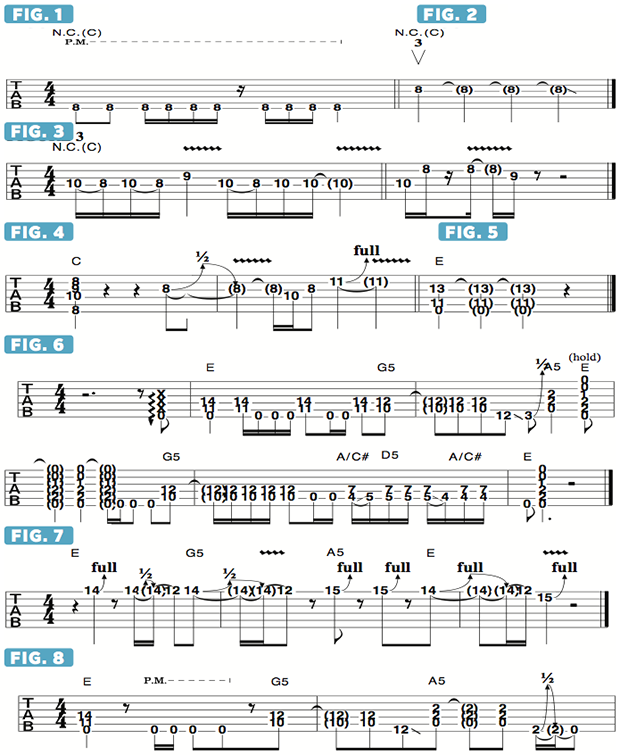Blurring the Line Between Major and Minor

This month I’d like to talk about the concept of blurring the lines between major and minor sounds, which is something that can seem very subtle but can be exploited in many different, expressive ways.
Let’s say you’re soloing over a groove, but the third of the tonic, or “home,” chord is undetermined, meaning that you can just as easily paint minor or major colors over it without clashing with the chord.
To me, one should consider the style of music that you’re playing when you go down this path, in regard to what’s “acceptable.”
If you’re jamming with Steve Vai and me, you can play whatever you want! But if you’re doing a session for a pop artist, there may be some serious constraints on your creative latitude. Over the years, I’ve had many conversations with other musicians about this “major third versus minor third” thing, and sometimes playing the “wrong” one seems like the right thing to do!
Let’s say you’re soloing over a C pedal-tone vamp, like that shown in FIGURE 1. The guitarist has the choice to either play the straight triadic notes of the implied chord—if it’s C, the notes are C, E and G—or you can opt to play something else entirely. My own inclination might be to play what’s shown in FIGURE 2, which is a hammer-on to the minor third, Eb, articulated with a whammy bar scoop and dive.
That would be the “I’m a rock guitar player and I make funny noises” kind of approach! Another is to be a little more harmonically specific in the line you play by choosing notes that clearly delineate a tonal environment.
In bar 1 of FIGURE 3, I utilize the notes C, Bb and E, making reference to C7 or C Mixolydian (C D E F G A Bb). In bar 2, I switch back to the straight C major chord tones. If the tonal environment is C major but you choose to lean on the minor third, Eb, the question is, “How do I resolve my idea back to a ‘major’-type sound?”
In FIGURE 4, I begin with a C major chord, but then bend the minor third, Eb, up to E, the major third, and then release back to Eb before resolving the phrase with a bend up to the tonic, C. Another example would be an idea where the minor or major third is intrinsic to the main riff. In FIGURE 5, I’m playing a G# octave over an open low E note to make reference to E major. In FIGURE 6, however, I play with this idea by moving from E to a G5 chord, changing the feel entirely.
FIGURES 7 and 8 offer two more examples of how I might allude to this chord progression while blurring the lines between major and minor.


Get The Pick Newsletter
All the latest guitar news, interviews, lessons, reviews, deals and more, direct to your inbox!









![Joe Bonamassa [left] wears a deep blue suit and polka-dotted shirt and plays his green refin Strat; the late Irish blues legend Rory Gallagher [right] screams and inflicts some punishment on his heavily worn number one Stratocaster.](https://cdn.mos.cms.futurecdn.net/cw28h7UBcTVfTLs7p7eiLe.jpg)
